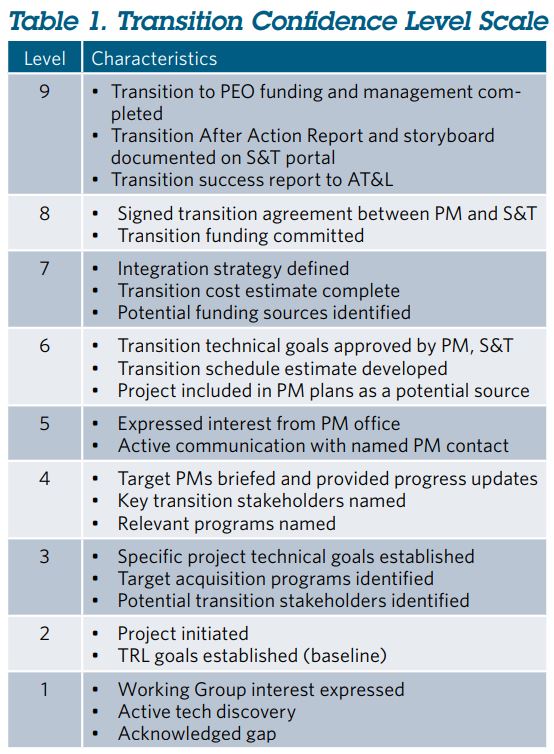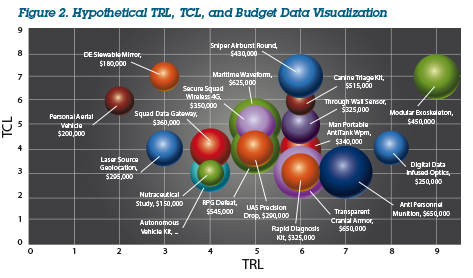Crossing the Valley of Death is a common phrase in DoD whereby many promising science and technology research projects fail to be integrated into programs of record and delivered to Warfighters. Given the rapid pace of change in technologies and an increasing role of commercial technologies shaping warfare, DoD needs to do a better job of transitioning viable technologies from our research centers to acquisition programs and/or directly into the field.
In Bridging the Valley of Death, Anthony Davis and Tom Ballenger describe how a USSOCOM team was chartered to develop a series of metrics to measure or predict the probability of transition success of innovative technologies to a program of record. The team developed a methodology analogous to Technology Readiness Levels (TRLs) to capture discrete activities preparing for technology transition and measure the organization’s confidence in transition success. This methodology, the Transition Confidence Level (TCL), is intended to provide common understanding of the mechanisms and motivation for transition between Science and Technology (S&T) project managers and Program Executive Office program managers, leading to an increase in the likelihood of successful technology transfer.

In the article they offer a notional example of a portfolio of projects with their TRLs and TCLs displayed visually.

Benefits of TCL Implementation:
- Its similarity to TRL methodology makes it easier to train S&T and acquisition workforce
- It enables consistent understanding and discussion of transition likelihood across several types of technologies
- Its steps capture and encourage necessary S&T and program coordination for technology transition
- Specific characteristics of each level are adaptable to changing organizational relationships and needs
- It allows quick identification of portfolio technology transition imbalances to both S&T and program communities
- Combined with TRL and budget data, useful organizational S&T investment-decision analyses can be made
Actions You Can Take
- Labs/Research Center Directors work with PEOs, portfolio managers, and key stakeholders to tailor and adopt a repeatable transition process. This includes:
- Developing cost estimates to transition/mature/integrate capabilities
- Identifying the appropriate types of and sufficient funding (including DoD/Service innovation funds)
- Shaping project technical goals, aligning with system/enterprise architectures/standards/interfaces
- Identifying a team to guide/facilitate/support transitions
- Aligning schedules and expectations
- Draft transition and/or integration strategy template(s) that individual efforts can tailor for their efforts
- Tailor a Transition Confidence Level framework and regularly assess/report on the TCLs for your organization’s research projects
- Identify forums for S&T project leads, program offices, innovation groups (e.g. DIU, AFWERX) to share capabilities and program needs and opportunities
- Regularly collaborate with traditional and non-traditional companies via multiple-award contracts, Other Transaction Consortia, Broad Agency Announcements to understand industry’s current and projected capabilities and provide insights into program and missions needs to shape their S&T and research projects.
References
- Bridging the Valley of Death, Defense AT&L Magazine, Jan 2017
- Promoting Disruptive Military Innovation, Col George Dougherty, Jan 2018
- A Platform Across the Valley of Death, Chris Gunderson, NPS for USD(I), Jun 2014


0 Comments